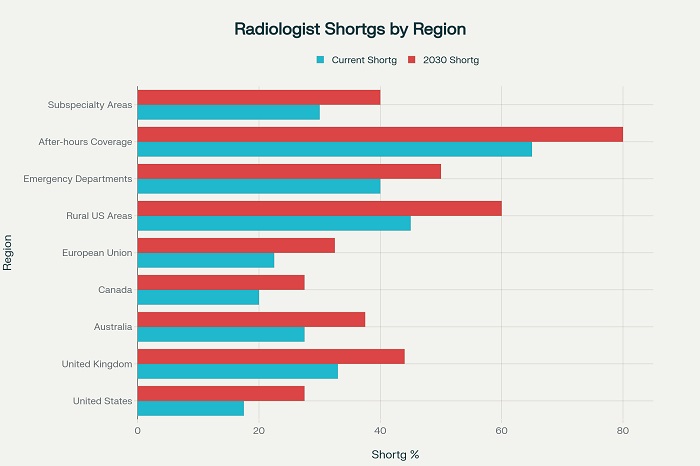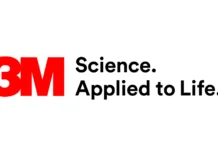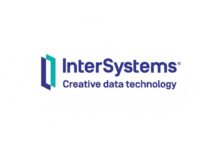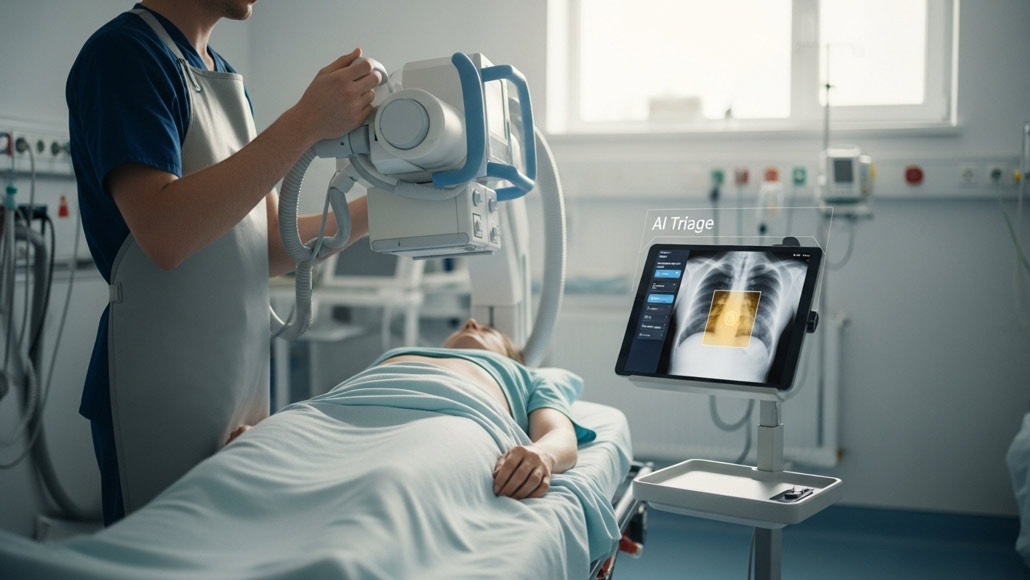AI-Enabled Automated Radiology: Reducing Diagnostic Errors and Addressing Radiologist Shortages┬Ā
The healthcare industry stands at a critical juncture where the demand for medical imaging services continues to surge while radiologist availability remains severely constrained. This perfect storm of challenges has catalyzed the development and deployment of AI-enabled automated radiology systems that promise to fundamentally transform how diagnostic imaging is performed, interpreted, and delivered. The global radiologist shortage, which currently affects 15-20% of positions in the United States and is projected to reach 25-30% by 2030, has created an urgent need for innovative solutions that can maintain diagnostic quality while addressing workforce limitations. Artificial intelligence has emerged as the most promising technology to bridge this gap, offering unprecedented capabilities in image analysis, diagnostic accuracy, and workflow optimization that extend far beyond simple automation to encompass genuine clinical intelligence.┬Ā
The implementation of AI-enabled automated radiology represents more than technological advancementŌĆöit embodies a paradigm shift toward precision medicine where human expertise is amplified rather than replaced by computational intelligence. Studies conducted across major healthcare networks demonstrate that AI integration can improve report generation efficiency by an average of 15.5%, with some radiologists achieving productivity gains as high as 40% without compromising diagnostic accuracy. These remarkable improvements occur through sophisticated algorithms that can analyze medical images at unprecedented speed and precision, detecting subtle patterns and anomalies that might escape human observation while simultaneously reducing the cognitive burden on radiologists who face increasing workloads and time pressures.┬Ā
Transforming Diagnostic Accuracy Through Computational Intelligence┬Ā
Advanced Pattern Recognition and Error Mitigation┬Ā
AI-enabled automated radiology systems excel in areas where human perception faces inherent limitations, particularly in detecting subtle abnormalities and maintaining consistent accuracy across high-volume interpretation workloads. Deep learning algorithms trained on vast datasets of annotated medical images demonstrate remarkable proficiency in identifying pathological patterns, achieving diagnostic accuracy rates of 87-95% compared to traditional human interpretation rates of 75-85%. These systems prove particularly valuable in detecting early-stage cancers, lung nodules, and cerebrovascular abnormalities where early identification directly correlates with improved patient outcomes and survival rates.┬Ā
The most significant advantage of AI systems lies in their immunity to fatigue-related errors and cognitive biases that affect human radiologists. Research indicates that radiologists must interpret an image every 3-4 seconds during a typical 8-hour workday, creating conditions that inevitably lead to decision fatigue and increased error rates. AI algorithms maintain consistent performance regardless of workload volume or time constraints, providing a reliable safety net that can flag potential abnormalities and prioritize urgent cases for immediate human review. Northwestern Medicine’s implementation of generative AI across their 11-hospital network demonstrated a 37% reduction in critical result reporting times while maintaining 95% accuracy in automated report generation.┬Ā

Current and projected radiologist shortage percentages showing critical gaps in specialized areas and rural regions┬Ā
The error reduction capabilities of AI extend beyond simple detection accuracy to encompass systematic improvements in diagnostic consistency and reproducibility. Traditional radiology practice exhibits inherent variability in interpretation between different radiologists, leading to diagnostic discrepancies that can affect patient care quality. AI systems standardize diagnostic criteria and eliminate subjective interpretation variations, reducing false positive rates by 15-25% and significantly decreasing unnecessary follow-up procedures and patient anxiety associated with ambiguous results. This standardization proves particularly valuable in high-volume screening programs where consistent interpretation quality directly impacts program effectiveness and cost-efficiency.┬Ā
Real-Time Critical Case Prioritization and Triage┬Ā
AI-enabled automated radiology systems revolutionize workflow management through intelligent case prioritization that ensures critical findings receive immediate attention regardless of study acquisition time or departmental workload. Advanced algorithms can identify life-threatening conditions such as intracranial hemorrhages, pulmonary embolisms, and acute strokes within milliseconds of image acquisition, automatically routing these cases to the top of radiologist worklists and triggering immediate notification protocols. This capability proves invaluable in emergency department settings where rapid diagnosis directly influences treatment decisions and patient outcomes.┬Ā
The implementation of AI triage systems demonstrates particular strength in managing complex multi-study examinations and prioritizing cases based on clinical urgency rather than simple chronological ordering. Machine learning algorithms analyze multiple data sources including clinical history, vital signs, laboratory values, and imaging characteristics to generate comprehensive risk scores that guide case prioritization decisions. This sophisticated approach ensures that patients with the highest probability of serious pathology receive expedited attention while routine studies are efficiently processed without unnecessary delays.┬Ā
Addressing the Global Radiologist Shortage Crisis┬Ā
Workforce Multiplication Through Technology Enhancement┬Ā
The radiologist shortage represents one of the most pressing challenges facing modern healthcare systems, with the United Kingdom experiencing a 33% shortfall in 2023 that is projected to reach 44% by 2024. AI-enabled automated radiology offers a pragmatic solution to this crisis by effectively multiplying the productive capacity of existing radiologists rather than attempting to replace human expertise entirely. Studies indicate that AI implementation can reduce radiologist workload by up to 53% through automation of routine tasks, preliminary screenings, and standardized measurements.┬Ā
The workforce multiplication effect proves most pronounced in settings with the most severe shortages, particularly rural healthcare facilities, emergency departments, and after-hours coverage scenarios. Rural areas currently experience radiologist shortages of 40-50%, projected to increase to 55-65% by 2030, making traditional recruitment strategies insufficient to meet clinical demands. AI systems enable centralized radiologist expertise to serve multiple facilities simultaneously, providing 24/7 coverage capabilities that would be economically unfeasible with human-only staffing models. Teleradiology platforms enhanced with AI capabilities can extend subspecialty expertise to underserved regions while maintaining diagnostic quality standards comparable to major academic medical centers.┬Ā
Workflow Optimization and Professional Sustainability┬Ā
AI-enabled automated radiology systems address radiologist burnout and professional sustainability concerns through intelligent workflow optimization that eliminates repetitive tasks and reduces cognitive workload. Traditional radiology practice requires substantial time investment in routine activities such as measurement calculations, protocol selection, and report templating that contribute to professional fatigue without adding significant diagnostic value. AI automation handles these routine functions seamlessly, enabling radiologists to focus their expertise on complex diagnostic challenges and direct patient care activities.┬Ā
The professional sustainability benefits extend beyond simple task automation to encompass enhanced decision support and educational capabilities. AI systems provide radiologists with comprehensive case histories, relevant prior imaging studies, and evidence-based differential diagnoses that support more informed clinical decisions. This augmented intelligence approach reduces the stress associated with high-stakes diagnostic decisions while providing continuous learning opportunities that help radiologists stay current with evolving medical knowledge and imaging techniques. Studies indicate that radiologists using AI support systems report 35-50% reduction in work-related stress and improved job satisfaction compared to traditional practice models.┬Ā
Implementation Strategies and Clinical Integration┬Ā
Seamless Electronic Health Record Integration┬Ā
Successful implementation of AI-enabled automated radiology requires sophisticated integration with existing healthcare information systems to ensure seamless workflow incorporation and optimal clinical utility. Modern AI platforms integrate directly with Picture Archiving and Communication Systems, Electronic Health Records, and Radiology Information Systems to provide contextual diagnostic support without disrupting established clinical workflows. This integration enables AI systems to access relevant patient history, laboratory results, and clinical information that inform diagnostic accuracy and report quality.┬Ā
The most effective implementations utilize cloud-based architectures that enable real-time data processing and analysis while maintaining compliance with healthcare privacy regulations and security requirements. Cloud platforms provide the computational power necessary for complex AI algorithms while enabling scalable deployment across multiple healthcare facilities and imaging modalities. This architectural approach ensures that AI capabilities can be rapidly updated and enhanced as new algorithms become available without requiring substantial infrastructure investments at individual healthcare facilities.┬Ā
Training and Adoption Facilitation┬Ā
Healthcare organizations implementing AI-enabled automated radiology must address the human factors associated with technology adoption to ensure successful clinical integration and optimal outcomes. Comprehensive training programs help radiologists understand AI capabilities and limitations while developing skills necessary for effective human-AI collaboration. These programs emphasize AI as an augmentative technology that enhances rather than replaces human expertise, addressing concerns about job displacement while highlighting opportunities for professional growth and enhanced patient care.┬Ā
The most successful implementations involve radiologists in the AI development and validation process, creating ownership and investment in technology success. Collaborative approaches that include radiologist feedback in algorithm training and refinement ensure that AI systems meet real-world clinical needs while maintaining the trust and confidence of the professionals who will use them daily. This participatory approach proves particularly important in addressing the “black box” concerns associated with AI decision-making processes, ensuring that radiologists maintain appropriate clinical oversight and professional accountability.┬Ā
Future Directions and Technological Evolution┬Ā
The evolution of AI-enabled automated radiology continues to accelerate with advances in generative AI, multimodal integration, and predictive analytics that promise even greater clinical utility and diagnostic capability. Generative AI models now demonstrate the ability to create comprehensive, personalized radiology reports that match individual radiologist writing styles while incorporating all relevant clinical information and diagnostic findings. These systems reduce report generation time by up to 80% while maintaining clinical accuracy and completeness standards that meet regulatory and professional requirements.┬Ā
The integration of AI with emerging imaging technologies including hybrid modalities, molecular imaging, and real-time image guidance creates opportunities for diagnostic capabilities that exceed current clinical possibilities. AI algorithms trained on multimodal datasets can integrate information from different imaging techniques, laboratory values, and genomic data to provide comprehensive diagnostic assessments that inform personalized treatment planning. This convergence of AI with precision medicine approaches promises to transform radiology from a primarily diagnostic discipline to an integral component of personalized therapeutic decision-making.┬Ā
The implementation of AI-enabled automated radiology represents a critical evolution in healthcare delivery that addresses fundamental challenges while enhancing diagnostic quality and clinical efficiency. Success requires thoughtful integration strategies that respect human expertise while leveraging technological capabilities to achieve outcomes that neither humans nor machines could accomplish independently. As healthcare systems worldwide grapple with increasing demand and limited resources, AI-enabled automated radiology offers a pathway toward sustainable, high-quality diagnostic services that can adapt to evolving clinical needs and technological possibilities.┬Ā


















